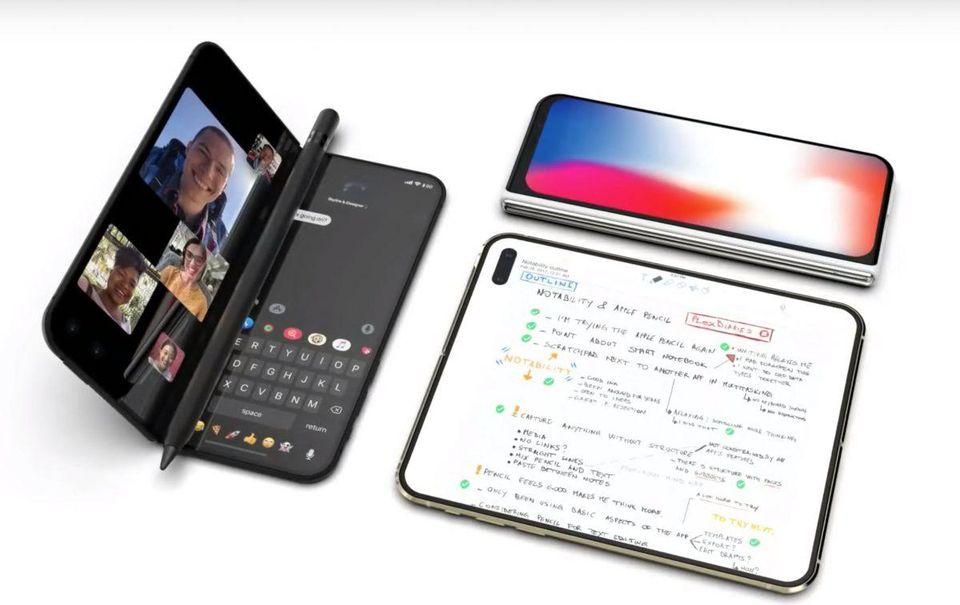
In typical Apple fashion, the Cupertino-based company isn’t rushing its rumoured foldable phone to market.
It isn’t overly concerned about keeping pace with Samsung, Motorola and other manufacturers to release its flexible iPhone (or iPad). Instead, analysts say that Apple is refining the technology and eyeing a 2021 launch.
Samsung could well be on its third Galaxy Fold by the time Apple’s device arrives – if it ever does – and by then and we’ll have a better idea of whether or not this technology is the future or a fad. Outside of a handful of examples – such as FaceID technology – this is the usual script: Apple adopts a technology later than its Android rivals and makes it mainstream in a way its Android rivals never could.
The benefit of doing this is that it has time to make the technology properly work and learn from the fumbles of other companies. What can Apple can improve on when it comes to foldable phones? Price, durability, repairability and necessity.
Bundled up
The three foldable phones that are available to buy right right now (excluding dual-screen devices) are Samsung’s Galaxy Fold, Huawei’s Mate X and Motorola’s Razr. The Samsung and Huawei devices cost around $2000, whereas Motorola’s handset retails for $1500 – they’re not cheap.
By the time Apple enters the market rival devices will likely have dropped their prices, which could be an issue for the iPhone maker since it isn’t exactly known for the affordability of its products. I can’t honestly imagine a scenario where Apple’s first next-generation product undercuts Samsung, but I hope some sort of olive branch is offered to potential buyers in the way of bundles.
We’ve already seen Apple giveaway a year’s subscription to Apple TV+ with new device purchases, which is fairly unprecedented for the company. Perhaps a new productivity focused foldable iPad or iPhone will come bundled with other appropriate subscription software or other, new, accessories. People are largely happy to pay a premium for Apple tech, but there may be a limit to that loyalty.
AppleCare+
Motorola has laid the gauntlet down by offering a a free “24-hour turnaround service” if the display fails. If there are other problems with the display “during normal use” then it will be repaired or replaced, too. For display or damage that occurs outside of this guarantee, replacements will cost $299. Motorola tells me that the full terms and conditions, which will include how many times owners are entitled to repairs, will be available when the device goes on sale.
It’s a good policy that recognises the unique potential problems that these displays offer. Apple, with its popular worldwide stores and support infrastructure already in place, is in a good position to at least match this. There’s room for improvement too, with cheaper out of warranty screen repairs and making devices easily fixable for third parties.
Apple has been staunchly against Right To Repair laws (later partially softening its position), but I suspect competition around foldable phones will kick-start a warranty war that might end in big manufacturers offering increasingly generous replacement or repair services. Apple could very well lead the way.
A reason to exist
Foldable phones seem to be quickly moving away from proof-of-concept devices that have no discernible reason to exist outside of a demonstration of next-generation technology. The Motorola Razr collapses into half size of a traditional smartphone, which solves the pocket problem. Microsoft appears to be positioning its Duo as a phone that has the dexterity to carry out desktop duties on a mobile.
Apple, too, needs to find its niche – and it doesn’t necessarily have to be different to what is already on offer. I think there’s a lot more to explore in terms of design and form factor. Finding new ways to shrink smartphones (science permitting) feels like the most natural avenue for Apple to go down. An even more compact clam-shell device would appeal to the iPhone SE crowd that never fully got on board with the larger displays, and, I suspect, those that reluctantly upgraded.
However Apple’s iPhone – or iPad – comes out, it’ll need a clear reason to exist outside of being the cool new gadget.
[“source=forbes”]




